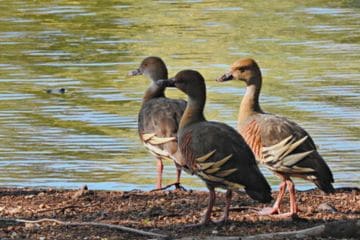A suspected H5 bird flu detection in elephant seals on World Heritage Heard Island should be a wake-up call, the Invasive Species Council says.
While Australia’s planning for the arrival of H5 bird flu on the mainland has been unprecedented and welcome, our lacklustre environmental laws mean that many species already under enormous pressure from threats will be at grave risk from this deadly new disease.
Despite this, the proposed reforms of the EPBC Act, due to be introduced next week, will do little or nothing to strengthen Australia’s capacity to prevent and mitigate major threats to nature.
‘The government’s investment in bird flu preparedness has been unprecedented and should be commended – it’s the first time the environmental impacts of a disease have been properly included in national biosecurity response preparations. But Australia’s failure to prepare for other emerging threats and deal systematically with existing threats leaves our wildlife highly vulnerable to new threats like bird flu,’ Invasive Species Council Policy Director Dr Carol Booth said.
‘This outbreak warning from Heard Island reinforces the need for federal Environment Minister Murray Watt’s EPBC Act reforms to give governments the legal tools and coordination to prevent and manage major threats to Australia’s wildlife – not just streamline development approvals.
‘Reforming the EPBC Act to strengthen threat mitigation – and boosting the Saving Native Species fund – are essential if we’re to protect wildlife from what’s coming.
‘Bird flu is just one of many looming threats. We need a system that spots danger early and acts fast. We also need a system that deals systematically with threats that can be eliminated or reduced to give wildlife the resilience to survive more challenging threats like bird flu.
‘We have campaigned to get Australia’s governments to prepare for the looming H5N1 catastrophe. But as well as the funding needed for Australia to properly prepare to do as much as we can to protect our precious wildlife from this one highly destructive disease, we need a system effective for other threats as well.
‘Since arriving in South America in late 2022, bird flu has killed more than 30,000 South American sea lions, 17,000 southern elephant seal pups and at least 650,000 native birds, including 40% of Peru’s pelicans.
‘If H5 bird flu turns up in Australia, the government-commissioned risk assessment predicts ‘catastrophic’ impacts on our native birds.
‘The rapid adaptation of this virus to mammals means the consequences for Australian wildlife could be even more catastrophic than predicted.’
Media inquiries: (02) 8006 5004








